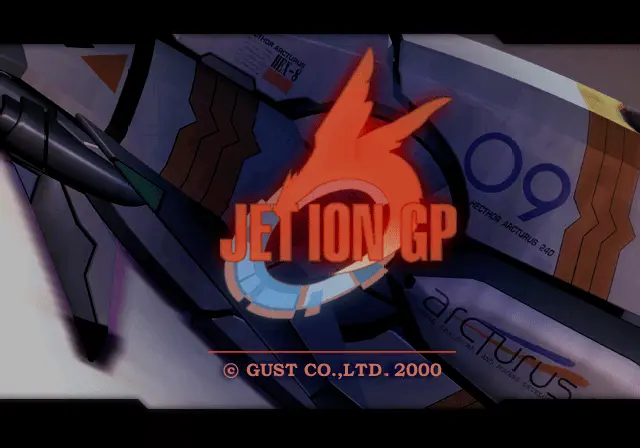
When you think of the games Gust has released internationally, you think of Atelier, EXA_PICO, Nights of Azure, and Blue Reflection. That’s it, right?
Nope! Racing aficionados in PAL regions may be familiar with Jet Ion GP, known in Japan as Hresvelgr: International Edition. Whichever name you’re familiar with (if any), it earned its poor reputation through choppy framerates and control issues, dooming it to obscurity.
However, a fascinating historical context surrounds the subpar racer. Hresvelgr was initially released in June of 2000, with the international version following in December of the same year. This makes it Gust’s first PS2 game, and the last of three releases in the gap between Elie and Lilie. Gust wasn’t established as the Atelier machine it is today. Aside from Marie and Elie, their portfolio consisted of two strategy games, another RPG, and a handful of adventure games. You wouldn’t think a company like that would suddenly branch into racing, but they sure did. Note that they haven’t made that mistake again!
Fittingly enough, this game was picked up for an international release by the now defunct shovelware extraordinaire, Crave Entertainment. Because nobody can spell or pronounce Hresvelgr (I sure can’t!), the game was at first known as Fusion GT. Bear in mind, this was in the works before the PS2 was even released outside Japan. This adorably optimistic article even predates the Japanese release of Hresvelgr:
Titled Hresvelgr in Japan, Fusion GT has been picked up for release in North America by Crave Entertainment. The game is a futuristic racing game that is set in the year 2040 and features these futuristic high-powered racing vehicles that hover in the air. This is definitely one of the PS2 racing games that you might want to keep your eyes on.
Soon after, Crave was making big promises, so IGN released another article. To summarize: the international release would bring framerate closer to 60, improve controls, add a two-player mode, and be a generally better game. As of that article, Crave had already been working with Gust to fix it up for three months, which means well before the initial Japanese release.
Not long after that, Fusion GT renamed to Jet Ion GP, and Crave made a rather interesting promise.
I guess the quality was never worthy of the PS2, as the US release was cancelled the following November. Ubisoft later released it for PAL regions in 2002, well outside of the PS2 launch window.
Aside from its tumultuous journey outside Japan, the key staff behind Jet Ion GP may surprise you. They’re famous Gust regulars. To start with, the producer of the game was one Tadanobu Inoue, who has a long history with the company. Akira Tsuchiya, better known for EXA_PICO, was credited with game planning, music, and course design. But of most interest was this: direction was done by Shinichi Yoshiike himself. If you’re particularly observant, you’ll know him as the director of Firis, though he’s not especially well known outside Japan. He designed, planned, and wrote scenarios for several other games as well. But even more importantly: he’s the person who created Atelier, and directed four of the first five games.
All these good names. Critical failure. And primarily for technical reasons at that! Little has changed, eh Gust?
Upon learning of this game’s EU release, I got this game myself for giggles (it’s dirt cheap!) and gave it a bit of a spin. I’ll be clear right now: racing is far from my favorite, and I’m not familiar with the state of the genre around 2002. With that in mind, I thought the game was boring. Long stretches of just reacting and bouncing against the twists and turns of the narrow course, not much reacting to AI actions or strategic use of items, and not an especially great sense of speed except in a few areas.
Since I emulated, the framerate was mostly 50 FPS as long there weren’t a bunch of vehicles on the screen. I couldn’t play on a real PS2 because my TV does not support PAL, but I have no doubt if I did I’d complain about the framerate like everyone else. It’s not the smoothest game ever.

Upon starting, you’ll be expected to pick a vehicle and pilot (or rather, vehicle color), then a weapon or add-on. I liked to go with WILLIAM CHIPS, because I loved that name and I was decent with the ship itself. During the races, you’d follow a colored band, such as the green one pictured above, around the five courses of the game. If you drift too far from the band, you would be slowed down and eventually forcibly (slowly) returned to it. The controls are wobbly enough and the courses narrow enough that you can expect to do this at least once. I pretty much went with the missile weapon because it would lock on, but overall the add-ons didn’t seem to matter much.
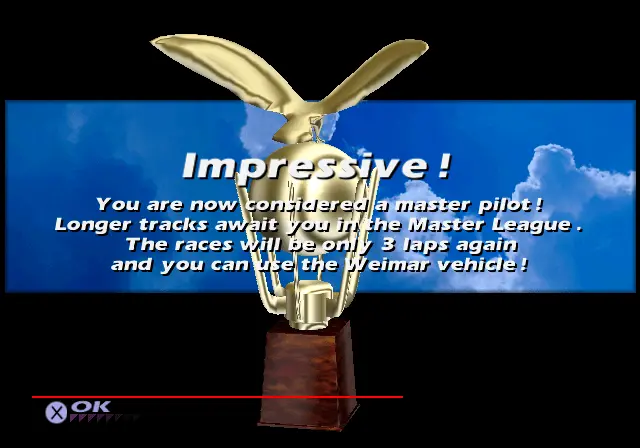
As you win races, you unlock new ships and “new” courses. I did not bother unlocking all the new ones, but here’s what I determined from what I did play: the first set merely reverse the five courses. The second unlock set presents a few more obstacles in your way. The course is narrow and these obstacles are a bit BLERGH to get around, and this is where I quit. Until this point it wasn’t particularly difficult for this racing noob, but after this point my boredom caused me to not want to actually get decent at the game.
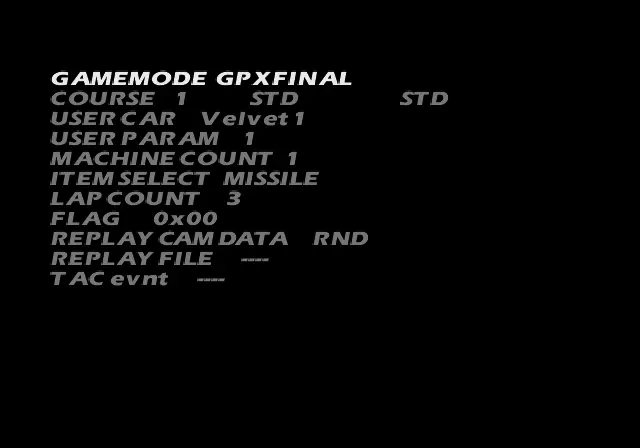
Rather, I settled for hacking the game instead, and I saw a couple other track variants while looking at the new ships, as well as demo stuff for Famitsu and others. Most importantly I forced the credits to look at the staff!
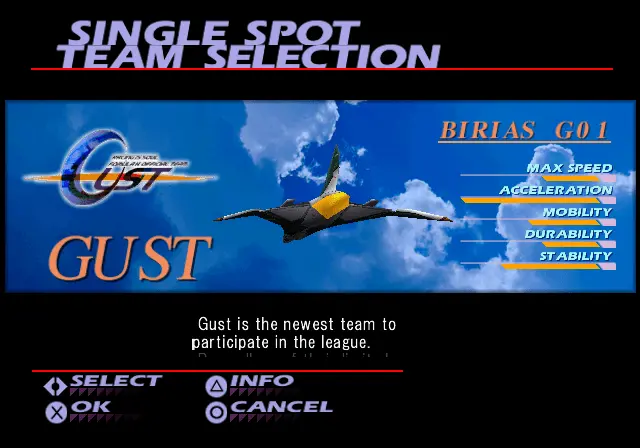
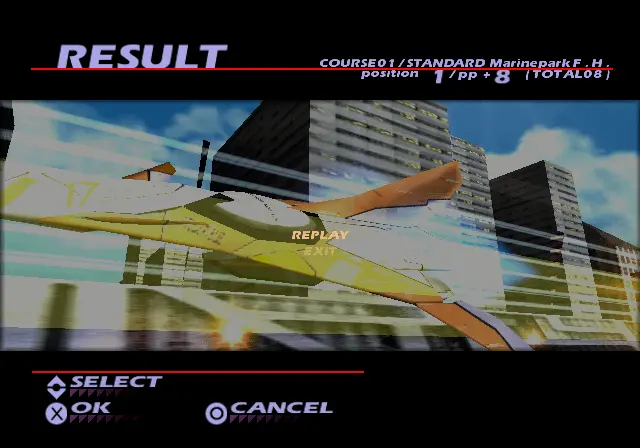
I suppose the most interesting thing remaining would be the presence of the Gust ship and its two different colors. The in-game screenshots are pretty fuzzy but if you look closely you can see Atelier Marie and Atelier Elie on them. I only bothered taking a proper screen of the Elie ship.

The best part of the game? The music. Miyoko Takaoka (née Kobayashi), you did good.
Last Updated: November 13, 2024
